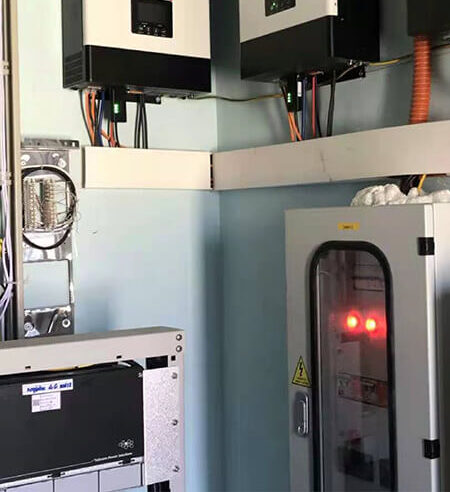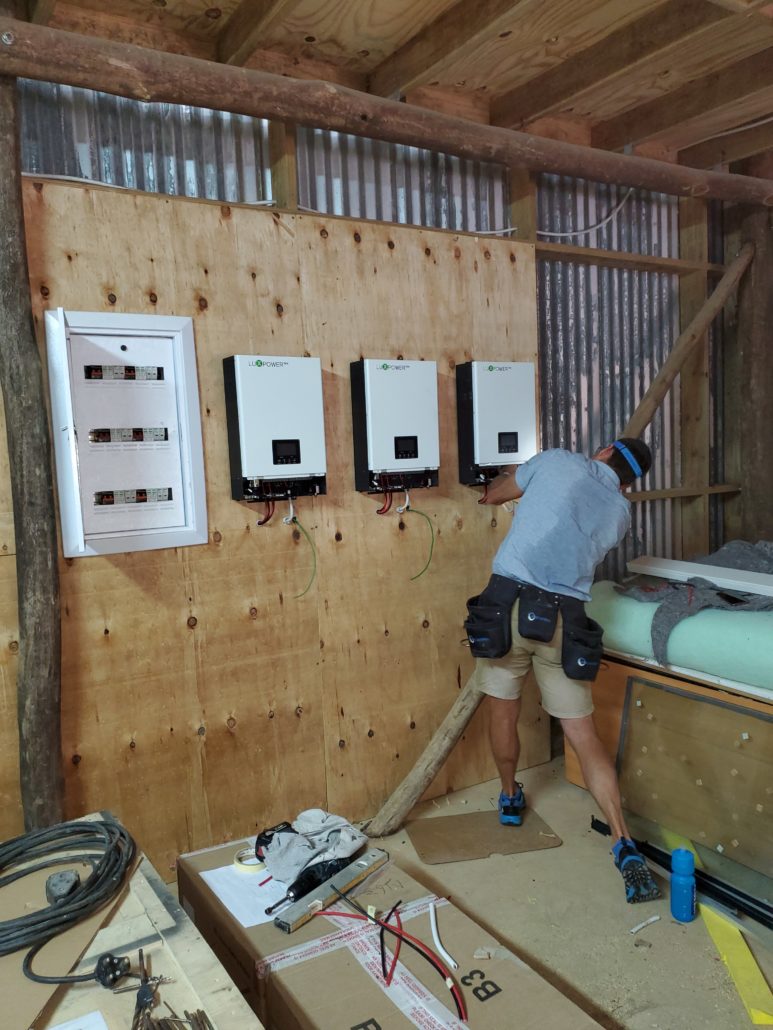Before buying a solar inverter, we have to calculate the solar inverter cost first. Because an excellent solar inverter may be with us for 30 or even 40 years. To keep our subsequent expenses to a minimum requires us to calculate the cost carefully before buying the inverter.
So, in addition to the inverter’s electricity bill and maintenance, do you know what else may increase your prices? If you are still a beginner in solar inverters, please browse our guide on the cost of a solar inverter. Most solar installers provide a shortlist of inverters if you already deal with them. However, it may limit your choice of an inverter.
This is because factors such as availability, size, and the solar installation location are important. They determine which solar inverter to install in your home. There are many inverters on the market. Each solar inverter has its own price, efficiency, and warranty. Knowing some background information will go a long way in helping you make an informed financial choice. You will receive a quote from a solar installer when you are ready to buy. This quote should include the panels included in the installation, the inverter, additional hardware and labor, and the cost of each item.


Solar Inverter Cost
The good news is that, while a solar inverter system isn’t cheap, it’s an excellent investment. As a result, solar installers can place huge orders for inverters, solar panels, and other relevant equipment. This enables them to obtain the best available pricing, which are frequently lower than what you or I can discover on the Internet or in stores.
What does a solar inverter cost?
- Inverters with strings: The solar inverter cost of an inverter is determined by its size and brand. A string inverter can cost anywhere from $1,000 to over $2,000.
- Micro-inverter: The solar inverter cost of a micro-inverter is mostly determined by the number of panels in the system and their rated output. A microinverter will set you back around $300. A system with a microinverter is expected to cost roughly 20% more than a system with a string inverter, according to popular estimates.
- Optimizers: Optimizers are similar to microinverters but are less expensive. Adding an optimizer to a few panels that really require one, on the other hand, may only cost a few hundred dollars.
- Hybrid inverter: Hybrid inverters are priced between $1,000 and $2,000, with many variants costing $3,000 or more.
- Battery inverters: If the battery requires a separate battery inverter, the overall cost of the installation will normally increase by $2,000 to $3,000.
What’s the Average Solar inverter cost


Solar Inverters cost between $1000 and $1500 for a medium – sized installation. However, as the size of the installation grows, the cost might drastically escalate. Professionals consider average installation prices, inverter and panel costs, and a variety of other issues.
They discovered that solar inverters cost roughly $0.28 per watt on average in early 2022, with prices ranging from $0.50 to $0.10. Inverters typically contribute for around 6% of the overall installed cost, with an average cost of $0.28 per watt and an average installation cost of $3.63 per watt.
This suggests that the inverter should account for around $1,100 of a total cost of $18,308 for a 6 kW installation. If your inverter is on the higher end of the spectrum, say $0.50 per watt (about 9% of the overall cost), it will set you back $1,650.
Solar Inverter Cost Quick Tip:
Larger solar systems necessitate larger, more costly solar inverters (and vice versa). However, multiplying the installation size (in watts, i.e. 5600 watts) by the typical solar inverter cost ($0.28/watt) can instantly tell you if your installer is seriously overcharging (or undercharging). This will serve as a standard against which you may compare your own inverter prices.
As an example, a 10 kW inverter installation should cost around $2,800. The inverter would cost around $4,760 for a 17 kW installation. Remember that this is the average price. Solar Inverters, microinverters, and high-efficiency inverters built in the United States are costly.
If your inverter accounts for more over 8% to 11% of the total installed cost, speak with your installer to figure out what’s going on. They could have made the sales or installation procedure easier. Inverters are therefore less expensive than others for other installations, rather than being overly expensive (labor, panels, etc.). In this scenario, the higher percentage of the total inverter cost is really beneficial to you (if they are still installing quality equipment).
What if I buy my own solar inverter?


Of course, you are free to purchase your own solar inverter. However, keep in mind that you will only be purchasing individual solar inverters, not in bulk like solar firms do. Then you’ll almost certainly have to pay a greater amount.
Of course, the amount you spend is determined by the manufacturer and model, as well as efficiency, warranty, and brand awareness. You will save on labor, sales and marketing, operating expenses, real estate rent, and other “soft costs” if you do your installation. These are all added to the overall installation cost by the installer. If you can avoid these costs, you will save a lot of money.
Solar Inverter Cost is not everything
When comparing these different solar inverters, we nearly entirely consider the cost of the SOLAR INVERTOR. Before selecting an inverter, however, there are a number of other equally vital aspects to consider.

Warranty Information
Solar inverters, with an anticipated lifespan of 15 to 20 years, are not as long-lasting as solar panels, which have a 25 to 30 year lifespan. Your inverter will almost certainly need to be replaced at some point. Spending a little additional money on an extended warranty at the time of purchase will save you a lot of money in the long run.A free 5-10 year parts and labor guarantee is included with all lux inverters. However, for a small charge, you can upgrade to a 20-30 year free warranty. This long-term warranty is well worth the high price tag.

Efficiency
The efficiency of an inverter is a measure of how much of the DC electricity it receives can be converted to AC power for use in the home or on the utility grid. Modern inverters are extremely efficient, with conversion rates of up to 98 percent for lux inverters.In general, lower-cost inverters will have lower efficiency. If you find a great deal on an inverter, make sure to check out its efficiency (together with the other factors given above) to ensure you’re making the right choice.
What causes solar inverters to break?
Because solar inverters are the most vulnerable component of a solar PV system, this is a critical consideration. Protecting the solar inverter might also help us save money.
There are two basic ways in which your solar inverter might be damaged.
- Installed incorrectly – If the solar inverter was not installed by an MCS-approved installation, it may have further issues. If you undertake a DIY installation, you may end up with unreliable fuses and poor wire connections since your inverter is not sized to accommodate your solar panels.
- Environmental deterioration – It is vital that you locate your string inverter in a safe environment. If you store your inverter too close to the ground, it will suffer from dust and high humidity in the summer. The best habitat is a well-ventilated garage or attic space.
Comparing different types of solar inverters

String inverters
The most popular type of inverter, as well as the simplest and most affordable. An inverter is attached to a string (or strings) of solar panels. The inverter is normally located near the home distribution panel on an external wall. For decades, this has been a popular solar PV system design, and it is suited for most residences.
Disadvantages
Solar panels have the ability to provide insufficient amounts of electricity. Because the panels in a string are connected in series. If one panel becomes shaded, badly contaminated, or fails entirely, the output of the entire string is decreased, usually to the level of the shaded panel.
In other words, if one panel’s output drops to 50% for any reason, the output of the complete string of panels also decreases to 50%. By doing so, you can basically lose the majority of the string’s output.
However, without shading concerns, this is unlikely to happen. You also keep your system in good working order and monitor its performance to spot any problems early.

Microinverters
Each panel can have its own microinverter instead of a single solar inverter for the entire system. In most cases, the panels and microinverters are distinct components. Installing microinverters is usually more expensive. Microinverters are even more subject to weather than string inverters on the wall because they are directly connected to each panel on the roof.
Tips
- Microinverters are slightly less efficient than a decent string inverter on their own. However, because of the reduced impacts of shadows, broken panels, and other factors, the overall efficiency of installing a microinverter can be boosted by roughly 12%.
- You will only lose the output of a panel if it fails or goes dark.
- There is no risk of arcing or fire with microinverters because they use AC power.

Solar hybrid inverter
Hybrid inverters are currently the most used inverter type. This is although hybrid inverters are more expensive than standard string inverters. However, in recent years hybrid inverters have recently started to compete with regular inverters in terms of price.
Long life, low power usage, and ease of maintenance are all advantages of hybrid inverters. It is, without a doubt, the greatest option for inverters.
It is crucial to note, however, that hybrid inverter degree batteries have extremely precise criteria. If you know you’ll be getting batteries soon, you can buy a hybrid inverter without them, but make sure the batteries you want are still available. Otherwise, compatibility problems may resurface.

Solar Battery Inverter
If you currently have a solar system and are satisfied with your current inverter, but wish to add a battery to it. Instead of replacing the inverter with a hybrid type, you can connect the battery to a dedicated battery inverter.
The battery inverter turns saved battery power into AC electricity for your home circuit, and it can also store solar energy.
In conclusion
For a couple of years, everything can function nicely. What about in five years? What about ten years? Let’s say 15 years. We have piece of mind knowing that we have an extended warranty. In general, the longer the manufacturer’s free warranty, the higher the product’s quality.
As a result, while choosing an solar inverter, we always prioritize affordability. However, make careful to consider its effectiveness, warranty, and reviews. Inverters are expensive, accounting for around 8% of the entire solar inverter cost of an installation. As a result, you must first ensure that you are purchasing a high-quality product before proceeding.

